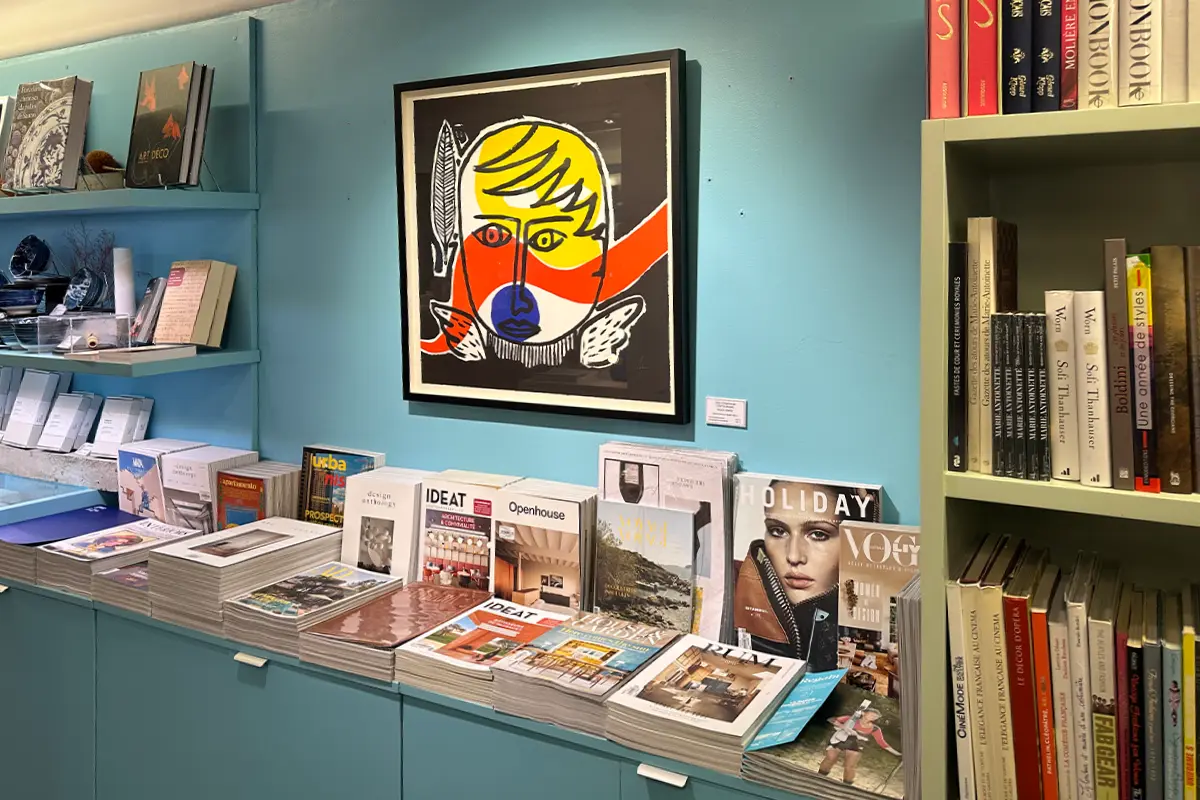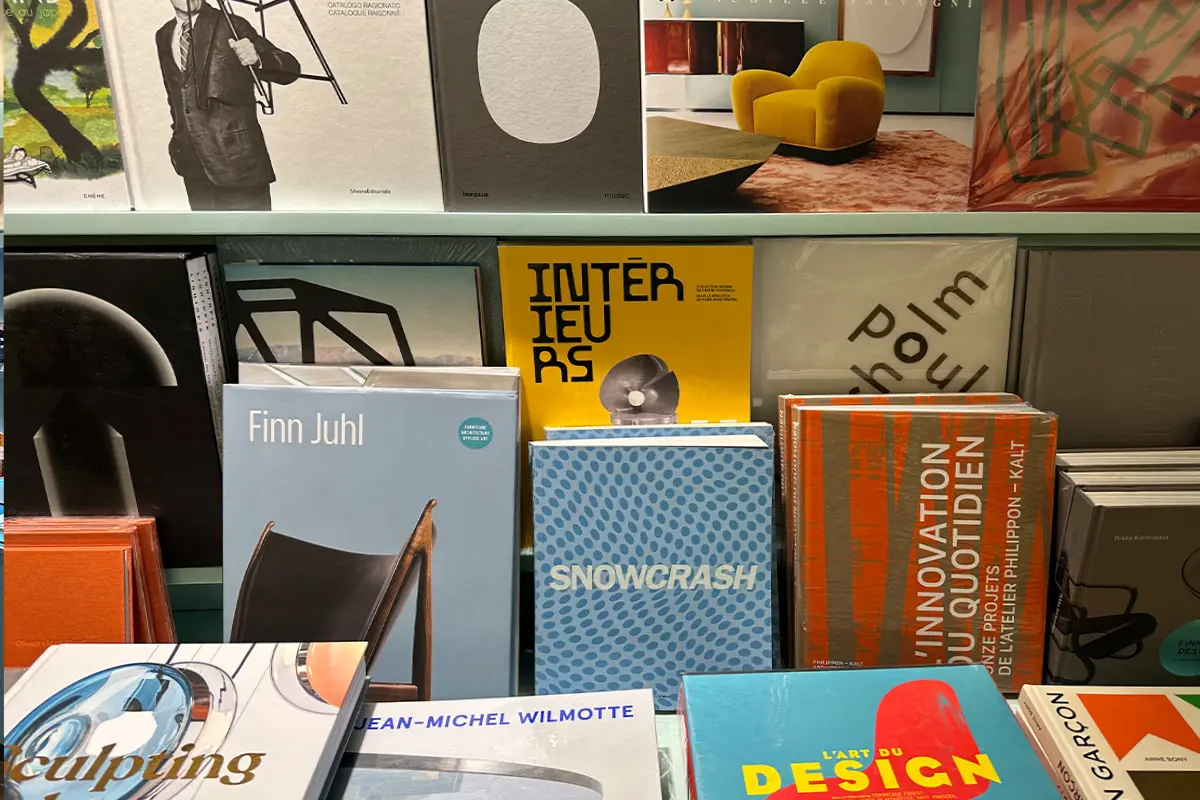The Pipistrello Lamp was designed by Gae Aulenti for the Olivetti showroom in Paris. Still produced by Martinelli Luce, it can be purchased at 107 Rivoli boutique
The history of Musée des Arts Décoratifs
The Louvre has always been one of the major institutions worldwide. When visiting Paris tourists cannot miss The Louvre to seek for the Da Vinci’s Gioconda, without knowing that in the same building, in the Pavillon de Marsan, in the northwest wing, is located the Musée des Arts Décoratifs.
The museum was founded in 1905 by the Union des Arts Décoratifs – UCAD, this is how the museum was called until it was renamed ‘Les Arts décoratifs’ in 2004. The architecture that composes the building was created by Gaston Redon, brother of the painter Odilon Redon. He was the official architect of the Palace and of the expansion of the Pavillon de Marsan.
For ten years, from 1996 to 2006, the space closed its doors to visitors to undergo a long renovation process, which involved the restoration of both the structure and the works that the museum hosted. Once it reopened, the institution was called the MAD, short for – indeed – Musée des Arts Décoratifs, in a more modern and functional acronym that recalls the one of contemporary museums.
Just like that, the Louvre’s neighbor decided to rejuvenate itself and have a new identity. The renovation gave more attention to the space, with its white hall lightened by natural light coming from circular skylights. A white corridor now takes the visitor to the discovery the museum’s collections.
The museum collection at Musée des Arts Décoratifs: history of design displayed
Exploring the interior spaces of the museum, the visitor walks across the history of France and Europe, with a permanent display born from private collections and that now consists in more than 788 objects. Those objects are set up in thematic order, instead of the usual chronological one. The context manages to combine design and fashion, graphic and archives, toys and wallpaper, glass, and photography, in a dialog that does not aim to create hierarchies between objects.
The exhibitions rooms span from the Middle Ages to Renaissance, from the Seventeenth to the Eighteenth Century, from the Nineteenth Century to the Art Nouveau, up to the contemporary Design Collection. The museum even includes the reconstruction of real era rooms, such as the Jeanne Lanvin’s house, the Eugène Grasset’s living room and the gold cabinet of Avignon.
The Design Collection is located on the last floors of the museum. This section sets a focus on the design objects of the contemporary age. Split into themes, a section is also dedicated to Italian Design: to the Sixties, the economic boom in Italy and, as a result, the birth of a major awareness about consumption and objects, with the development of democratic and modern design devoted to everyday life.
An Italian Sixties celebration: the contemporary design collection
Among the works of Italian Design that made history is an object that is still been hosted many homes and offices since 1965: the Pipistrello Lamp. In the Sixties the adjustable high – a diffused light that makes any environment cozy – became popular. The use of new materials is stressed out as well, like the methacrylate, a plastic material that transmits a high level of light and can also be modeled in any shape we want.
The Pipistrello Lamp was designed by Gae Aulenti. Mostly specialized in big museal projects, she realized the lamp as a site-specific project for the Olivetti showroom in Paris. Still produced by Martinelli Luce, an Italian historical company devoted to light and interior design, the Pipistrello is still one of their best-selling products.
The lamp can also be found in the museum shop, the boutique located on the museum’s ground floor, next to the restaurant Loulou, a Michelin Guide mentioned bistrot created by Joseph Dirand – with its own life beyond the museum activity, the restaurant offers an everyday service throughout the week.
The Musée des Arts Décoratifs museum boutique, 107 Rivoli
The design boutique 107 Rivoli takes the design outside the museum to offer a selection of pieces directly to the visitor. At the store Musée des Arts Décoratifs, other than Gae Aulenti’s Pipistrello lamp, a selection of design objects is offered to the customer, spanning from jewelry, fashion, accessories, decorative elements, graphic design, stationery, books and magazines, toys.
Everything at the boutique is strictly of artisan quality, with an attention to the young creators that here can find their own spot. This space is also becoming a forum for research and creation, with an accent to the ancestral craftsmanship of the manufacturers, particularly French, and traditional ornamentation.
Even the furniture that composes the shop is of design and modular, in such a way that can be set up differently according to new set-up needs. The storefront is regularly curated by leading contemporary designers and creators. Also, a special section is devoted to a thematic display of objects, often exclusive, about current exhibitions.
The museum shop curation at 107 Rivoli
The shop was ideated by Mathilde Bretillot, interior designer and member of the ‘La Mission des Mètiers d’Art’ for the French Ministry of Culture. Since 2014 she is the co-founder and creative director of International Design Expeditions.
Each year, the boutique becomes a space where the dialogue between beautiful and useful is still active and vital. In this sense, the shop creates events in its space, from meeting with designers and authors to personalized shoes, events for all kinds of audience and interests. A shop that extends the museum heritage into everyday life.
Musée des Arts Décoratifs, 107 Rivoli
The Musée des Arts Décoratifs is a museum of decorative arts and drawing, located in the Louvre Palace, west wing, known as Pavillon de Marsan, at 107 Rue de Rivoli, in the 1st arrondissement of Paris. The museum houses fashion, advertising, and graphic arts exhibitions and collections, especially coming from the now closed Musée de la Publicité and Musée de la mode et du textiles.
107 Rivoli is the boutique of the Musée des Arts Décoratifs. It is composed of three spaces that overall cover a 300 square-meters area. The store includes a collection of books and magazines, jewelry, accessories, stationary, toys, and objects of past and contemporary design. The boutique especially attracts professionals of arts, fashion, and design.




















